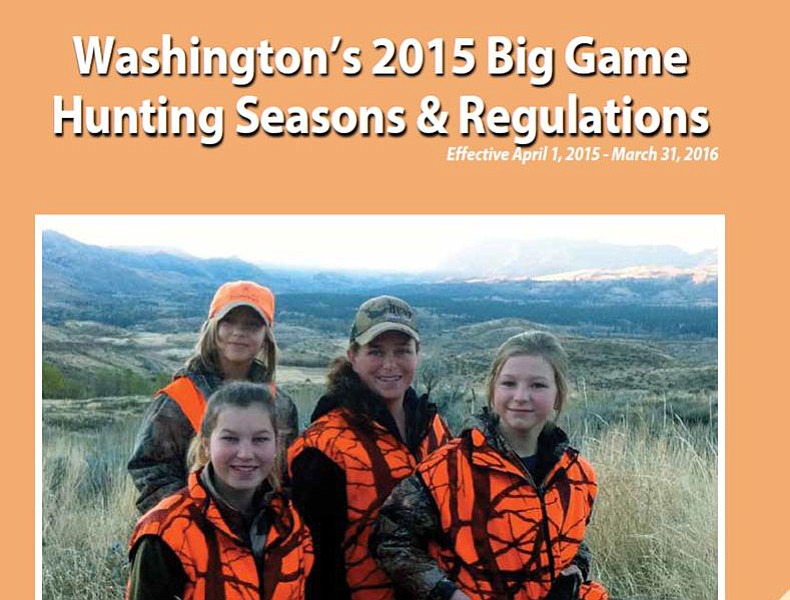Increasing numbers of women are learning to shoot rifles and bows to enjoy hunting and the meat they can put on the table.
The growing interest of women in blood sports isn’t a stampede, but it’s significant enough to capture the attention of the hunting and shooting sports industries, as well as the media.
Also interested is Stacy Keogh, Ph.D., who teaches in the Department of Sociology at Whitworth University.
Keogh was one of four panelists in a discussion of women in hunting and angling during the Backcountry Hunters & Anglers National Rendezvous held in Spokane in March. The panel explored women’s hunting pursuits in and beyond their interpersonal relationships with fathers, families and partners.
But before that presentation, Keogh had asked students in one of her classes to help conduct interviews and a survey with women who hunt.
The sampling was by reference rather than by random. The women interviewed are scattered in 17 states, but 50 percent are from Washington and most of them live in and around the Spokane area. The women ranged in age from 18 through 65.
“The study discovered interesting social trends,” Keogh said. For example:
-
Women are far more likely to hunt deer than any other animal.
-
They usually hunt fewer than five days a year.
-
Women typically hunt on private land more than public land.
More important to Keogh were survey results indicating that about 70 percent of women prefer to hunt in pairs and 10 percent preferred to hunt in groups, which included family members.
“Given that only a quarter of the female hunting population reports being actively involved in other hunting camps or groups, women tend to be highly selective with whom they go afield,” Keogh said.
The women in the survey are more inclined to hunt with men than with any other population, she found, and 75 percent of women report that their hunting partner is either their father or male romantic partner.
Only 18 percent of the women reported having hunted alone. Yet even the women who reported hunting alone said they were introduced to hunting by a father or a male romantic partner, she said.
“It appears, then, that women approach hunting not strictly from a recreational angle, but one that considers relationships as a primary motivator to participation,” Keogh said. “Women also describe hunting as a family event. In the interviews, each woman reported ‘spending time with family’ as a primary motivating factor for participating in hunting.”
One finding is perhaps worth a study in itself: Of the 40 women hunters interviewed, 39 are daughters of a man without sons.
Keogh said it’s common for a woman presented a hunting opportunity to wonder “What will people think of me?” and “Will I be capable?”
Most photos women share about hunting show them with their kids or male partner – their comfort zone.
This is “further evidentiary support for the thesis that women tend to associate hunting as an opportunity to spend quality time with family,” Keogh said.
“Current research examining media images of women in hunting is discovering that women are far more likely to be pictured with another man or child rather than alone or with another woman.”
Yet more women are becoming comfortable saying it’s a cool feeling to have people recognize them as hunters.
According to the U.S. Fish and Wildlife Service survey on Fishing, Hunting, Wildlife and Recreation, between 1991 and 2011, the ratio of participating hunters in the United States declined from 7 percent to about 5 percent of the entire population.
“Women’s participation, however, has increased almost 2 percent,” Keogh said. “While the number of hunters in the U.S. is declining overall, women represent a greater proportion of the hunting population, increasing from about 11 percent to about 14 percent of all hunters.
“Women are currently the fastest growing hunting demographic in the country.”
Females also are showing up in more hunting media in recent years, Keogh said, noting that “Women: Hunting through the Generations” was the theme of this year’s Washington Fish and Wildlife Department photo contest.
The winning image features a West Side mother with her three daughters posed around the first deer shot by one of the girls.
The photo graces the cover of 650,000 copies of the 2015 Washington hunting regulations pamphlet published this spring.
“This photo contest is not one of a kind, but it is noteworthy,” Keogh said.
“The fact that women are achieving more recognition as hunters represents an important social and cultural shift. That shift is made even clearer upon entering a sporting goods store where women’s hunting gear is now readily available.
“Moreover, women hunters and personalities are more prevalent on television, with celebrity figures such as Eva Shockey being highlighted on the cover of Field & Stream magazine.”
Keogh said the sample used for her study does not necessarily reflect the interests and pursuits of all women hunters.
“However,” she said, “the increasing media attention is providing women with a sense of belonging in an outdoor activity where they’ve often been invisible to the public eye.”



